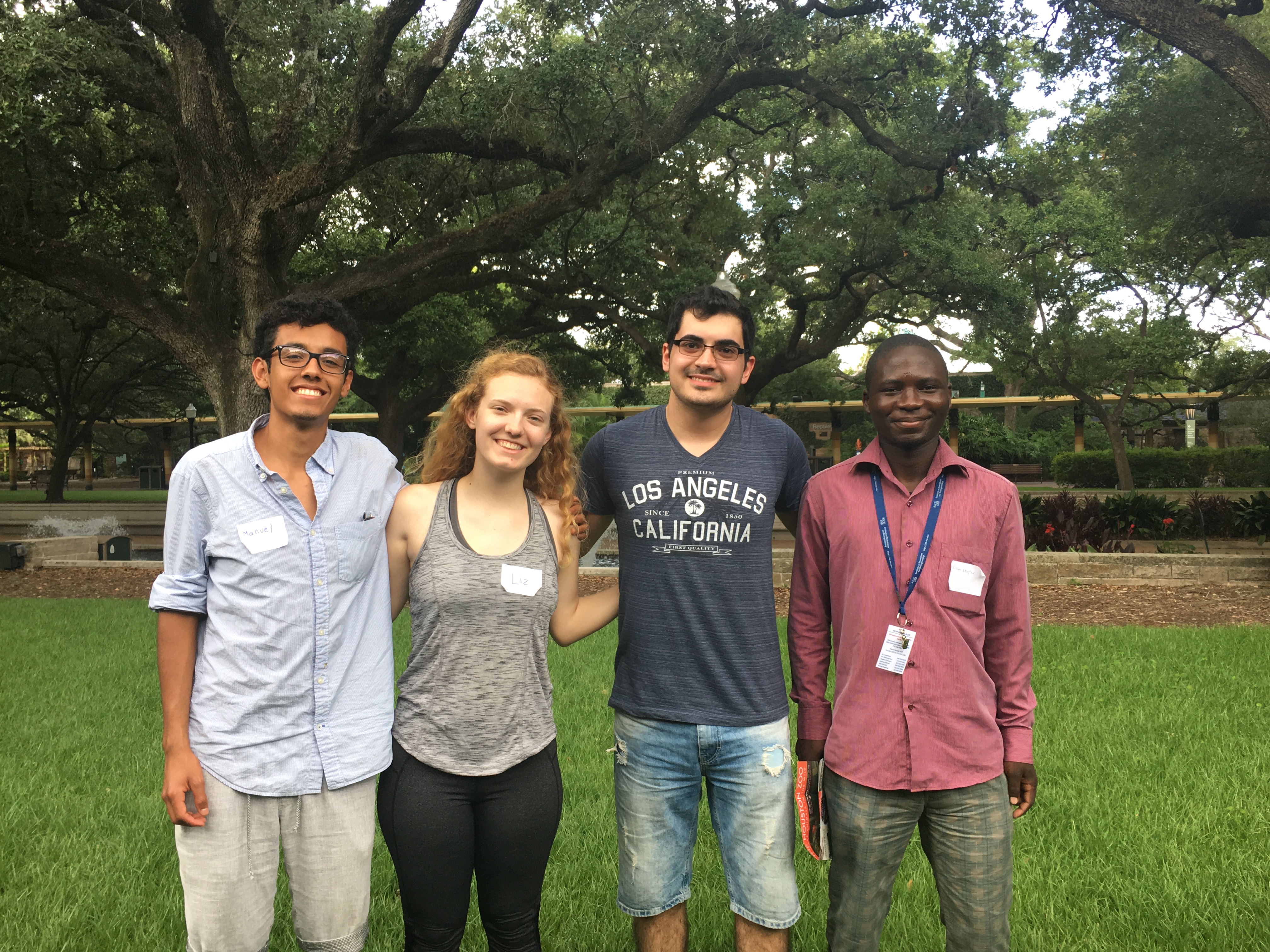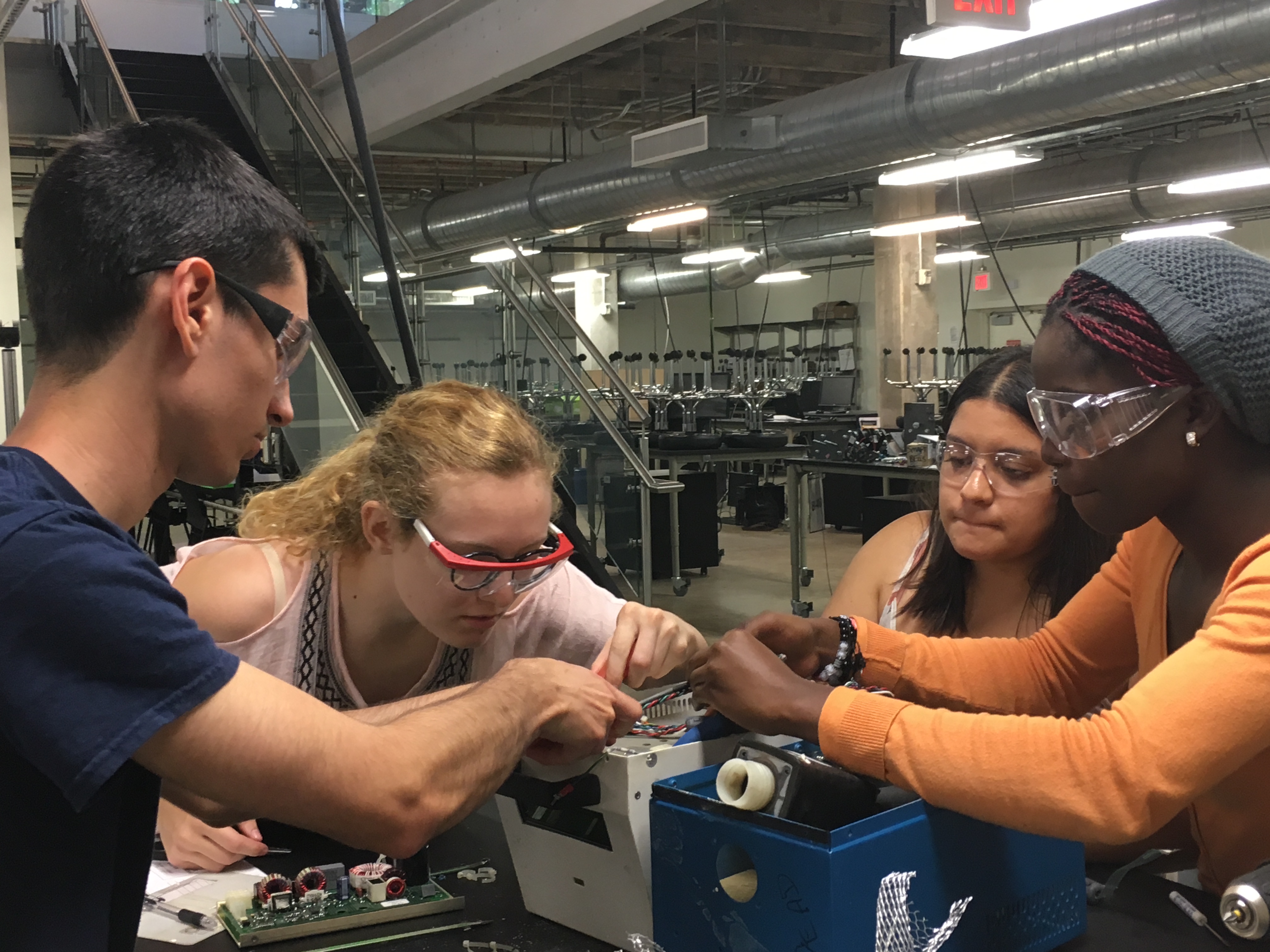Hello! I’m writing to you at the end of SEED: Week 1, and so far, it’s been a lot of fun. My name is Liz Kacpura, and I am originally from the Chicago, Illinois area, so the weather down here has definitely been a struggle. I’ve been adjusting to both being in extreme temperatures and humidity slowly, but surely, and every day seems easier to handle. However, it is a perk that I spend most of my time in the extreme air conditioning of the OEDK.
On to the events of this past week! We all arrived at 9 AM sharp on Monday morning, and did some fun ice breakers to introduce the Americans, Malawians, and Brazilians to each other. Until the early afternoon, we learned a bit about the SEED program, and took care of some office work. The best part of the first day was going to visit the Houston Zoo and split into teams to work on a scavenger hunt there. Before this, I have only been to the Houston Zoo for other design projects and not to look around, so it was nice to be able to see all the animals, and especially to win the scavenger hunt!
The next day was about learning even more about what to expect this summer, and what is expected of us. We were able to do a fun demo on deconstruction, where my team worked on taking apart a cooling pump (which was very hard to get into), however, within the last 15 minutes, we were actually able to see the inside workings. I liked this demonstration, because so many times when learning about engineering, the focus is on building new things rather than trying to understand the old, when we can learn so many things new to us about what has worked for engineers in the past.
After deconstruction and lunch, we broke apart into teams again to make cultural presentations, where 2 Americans, a Malawian, and a Brazilian were put onto a team to give presentations on one of four topics, University Life, Big Culture, Little Culture, and Infrastructure/Geography. My team presented on University life, and I think the biggest difference among the three countries in this aspect was the actual classes and requirements needed to graduate. In America it is very standard to attend school for 4 years, taking approximately 15 credit hours each semester (5 classes), however at the university in Brazil, the students are expected to complete 236 credit hours in however long it takes to complete them (usually around 5-8+ years) and instead of having many assignments to complete for these classes, they only have 10 hours of assignments to complete each month, which is insane from my perspective, where I work on assignments every day of the week during the year. For the Malawians, they have at least 30 hours of classwork and 10 hours of assignments in a week to be completed over 4-5 years. While the Malawian’s experience is a lot more similar to the American perspective, both the Malawians and the Brazilians have a larger focus on the actual class itself, rather than completing assignments for the classes, which is the opposite of common American practice, where most of the time is spent completing assignments or studying for exams.
After the first two introductory days, we dived into boot camp. In this internship, the purpose of boot camp is to quickly learn the engineering process while applying the concepts to an actual engineering design project — creating an enrichment device for the Okapi at the Houston zoo!

The focus of our mini project: the Okapi!
This project will actually be my second experience working with the Houston zoo, as my first semester project for ENGI 120: Intro to Engineering Design was to design an enrichment device for the anteaters at the zoo. While I have been able to apply a lot of my background knowledge of the purposes and basic designs of enrichment devices on the Okapi project, I have already learned a lot about applying this knowledge to the needs and wants of an Okapi instead of an Anteater.
We’ve had 2 full days to work on the engineering design process with this project and so far we’ve gotten through and are working on the following steps.
- Define the problem: Have a clear image of the problem to solve.
- Do background research: Research enrichment devices and the habits of the Okapi.
- Make design criteria: Specify objectives that our design should meet.
- Brainstorm: Think of full ideas and partial ideas for a solution to our problem.
- Complete charts: Complete charts that will put component ideas into full solutions, screen the full ideas to help us pick out the best ones, and score these ideas to find the idea to actually produce for the zoo.
By the end of today (Friday) we will have successfully completed both screening and scoring, so we will know which idea we will be creating!
So far, it has been a lot of fun, and very informative to relearn the engineering design process and more so get to know and interact with the international students. I’ve only had a little exposure to their different perspectives and thought processes, but I think through the whole summer, I will be able to adjust my approach to engineering by including ways that they work as well. Although the week may be coming to a close, I am so excited bywhat we have been able to accomplish so far, and what we will be able to do the rest of this summer on our full time design projects. I have so much to experience still, and I am very excited to document and share my adventures on this blog!
Until next week,
Liz Kacpura



I admire your consistent enthusiasm for learning and am pleased you are having such a productive and interesting summer learning from other students and sharing your skills.
Harrell and I keep sharing information about the project of the Anteater Enrichant Squad with our friends, who are very impressed with the O.E.D.K. The project was only the beginning of developing competent and productive engineers. Harrell and I wish you continued success.
Carolyn